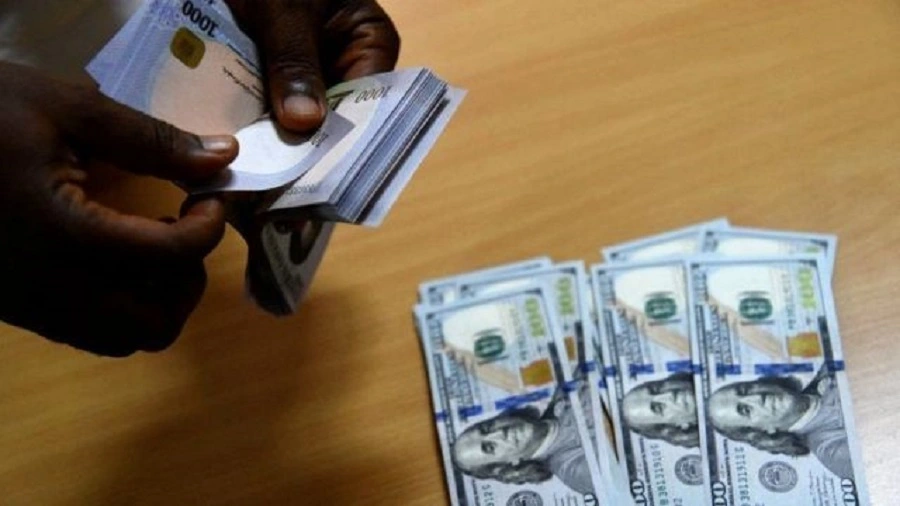According to the International Monetary Fund (IMF), over 40 per cent of deposits in local banks are now in United States (U.S.) dollars with high rise in inflation and exchange rate being the major contributing factors.
The IMF stated that the practice confirms a decline in confidence in the local currency and added that “it is typically difficult to reverse.”
The IMF claims that under conditions of high and enduring inflation, market players switch to dollar savings in an effort to protect their capital.
Nigeria operates with a dollar bias for international trade, financial invoicing, and most recently, as a store of value, according to the Fund’s report on dollar savings. Dollars account for more than 40% of bank deposits in Nigeria.
The IMF said the process of reversing citizens savings in dollars could be complex even after addressing the initial trigger, such as high inflation and exchange rate volatility.
Following the Central Bank of Nigeria’s (CBN) adoption of the naira redesign policy and the release of new banknotes, the country’s use of dollars as a form of value storage deteriorated.
According to the policy, the CBN removed the previous 1,000, 500, and 200 naira notes from circulation and substituted new ones in their place.
The CBN and the Federal Government were ordered by the apex court to permit the coexistence of the old and new naira notes through December 31.
The redesign of the banknotes could unintentionally cause the local economy to become more dominated by the dollar.
According to the IMF, the majority of economies use foreign exchange (FX), which has a dollar bias for international trade and financial invoicing.
“The optimal choice between domestic currency versus dollars will depend on the monetary framework and the benefits that each may offer as they co-exist as two currencies,” it said.
The IMF explained that in a highly dollarised economy, there is extended use of the exchange rate for price indexation (high real dollarisation and almost complete pass-through from depreciation to inflation). Forex is also used in foreign trade.
It said: “There is limited scope for fiat currency (tax payments, public expenditure, non- durable goods, and low- value transactions; extended forex use for durable goods, real estate, capital goods, and high-value transactions. Also, forex takes over the role of store of value as lending capacity in domestic currency becomes limited. Most loans become forex- denominated when forex bank deposits are allowed.”
The Fund said banking systems in many developing economies are bi-monetary while the U.S. enjoys a privileged status as issuer of the most widely used international currency.
It said a bi-monetary system embodies the failure to conduct monetary policy in an effective way, such as, secure price stability, efficient payment systems, and well-functioning financial markets (including long-run financial contracts at comparatively low nominal interest rates).
“The most common type of dollarisation is financial dollarisation (FD), or asset substitution, caused by a poor performance of the local currency.
“The local currency is used more for payment transactions but is replaced by the dollar as saving asset or store of value, in line with Gresham’s law.”
Under extremely high inflation, such as in Venezuela or Zimbabwe, real dollarization (RD) – i.e., use of the dollar as means of payment transactions and store of value -also takes place.
It said: “On the one hand, in some countries dollarisation is entrenched and a bi-monetary system is formally allowed (e.g., Uruguay). On the other hand, in other countries it is not allowed, or dollar accounts are restricted. Under high inflation (e.g., Argentina or the Democratic Republic of the Congo), the public holds a large share of financial assets abroad and local financial intermediation is low.
“Countries with no history of extreme high inflation (e.g., Malaysia) impose restrictions on dollar deposits, but there seems to be no significant impact on local financial intermediation.”
The IMF said a bi-monetary system limits the role of the exchange rate as a shock absorber, as real dollarization implies a high pass-through from exchange rate depreciation to inflation.
It said: “Financial dollarlisation creates currency mismatches and liquidity risks for the financial system and the economy as a whole. Therefore, the exchange rate amplifies negative external shocks rather than absorbing them.
“Both financial dollarization and real dollarisation jeopardize monetary transmission mechanisms, as inflation expectations are difficult to anchor with a weak interest rate channel.
“Financial dollarisation-related financial instability would need to be addressed via policy responses such as a central bank forex reserve buildup and associated regulation.”







Comments 1